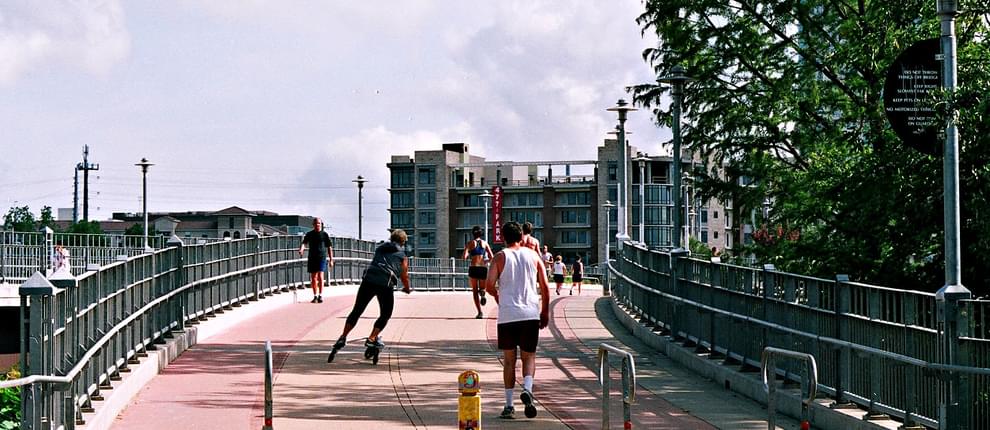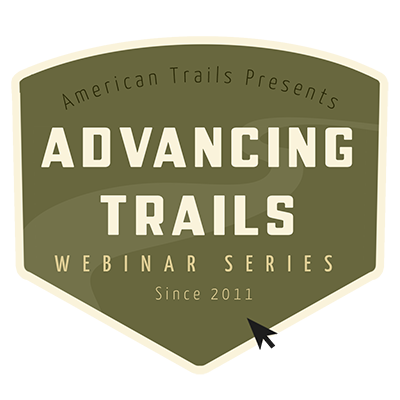




Subscribe to our mailing list for notifications on our latest trainings.

This webinar explored methods for enhancing trail security and safety perceptions through environmental design. This webinar was a concurrent session at the 2017 International Trails Symposium.
Presented by:
** This event has passed **
August 31, 2017
10:30 AM to 12:00 AM (Pacific Time) {more time zones}
Cost (RECORDING):
FREE for membersNote:
Closed Captioning is available for this webinar.
Learning Credits are NOT available for this webinar.
This webinar is free. Would you consider a donation to support this webinar?
Since trails are often community focal points, crime on the trail can be perceived differently than crime on the street—it may generate more attention that prevents or inhibits use on trails.
While studies have shown that trails themselves do not generate crime, in many urban areas, perceived safety is serious, and even the perception of trail safety creates a stigma for trails as a public facility. Crime Prevention Through Environmental Design (CPTED) is a proactive crime fighting technique in which the proper design and effective use of the built environment can lead to a reduction in the fear of and incidents of crime.
Using a multi-disciplinary, multi-pronged approach to trail planning and design, law enforcement, landscape architects, city planners, and resident volunteers can create a climate of safety on trails. This session will explore methods to enhancing trail security and safety perceptions through environmental design.
Presenters will discuss tackling CPTED design strengths and challenges, using programs and partnerships, and the nuts and bolts of safety audits, corridor assessments, and design review.
Brittain Storck, PLA, CPD, Principal, Alta Planning + Design

Brittain (Britt) Storck has established her landscape architectural career around greenway and trail placemaking, natural resource-based recreation projects, and active community design and planning for 15 years. She co-chairs Alta’s National Trail Service Area, leads the firm’s east coast Landscape Architecture practice, and is a national expert on Crime Prevention Through Environmental Design (CPTED). Britt has worked collaboratively with engineers and planners, urban designers and in a volunteer capacity across the country to develop projects that activate communities and improve the quality of life. She has the CPTED Professional Designation (CPD) credentials obtained through the National Institute of Crime Prevention (NICP) training program. Individuals with this designation are qualified to identify strategies and concepts for projects that effect human behavior and influence a project’s real and perceived safety. CPTED experts perform field assessments and site plan reviews, write CPTED ordinances, author design guidelines, and provide overlay districts for planning and zoning.
Jamie Rae Walker, Ph.D Texas A&M Extension

Jamie Rae Walker is an Assistant Professor at Texas A&M Extension. Jamie Rae Walker, Ph.D. has worked in community planning and implementation for over 17 years. She provides community technical assistance in evidence based planning. She has presented and facilitated over 150 sessions. Jamie’s professional involvement includes TRAPS, Extension Specialist Association and recipient of Center for Disease Control grant projects for improving access to physical activity amenities. Jamie was honored with the TRAPS Educator Award, AgriLife Superior Service Team Award and USDA Team Awards.
We are offering closed captioning for our webinars, thanks to a partnership with VZP Digital. If you are in need of this service, please email us prior to the webinar. An unedited transcript will be sent to all attendees following the webinar.
While we may individually agree (or disagree) in whole or in part with any or all of the participants, the views expressed in these webinars are not necessarily representative of the views of American Trails as an organization or its board and staff. Unless specific situations are noted by presenters, nothing in American Trails webinars should be considered to be interpreted as a standard.
By registering for our webinars, you submit your information to the webinar organizer and associated presenters and sponsors, who may use it to communicate with you regarding this event and their other services. Your organization may also be added to the American Trails Business Directory. You can easily cancel your registration at any time.
1,867 views • posted 01/26/2018
